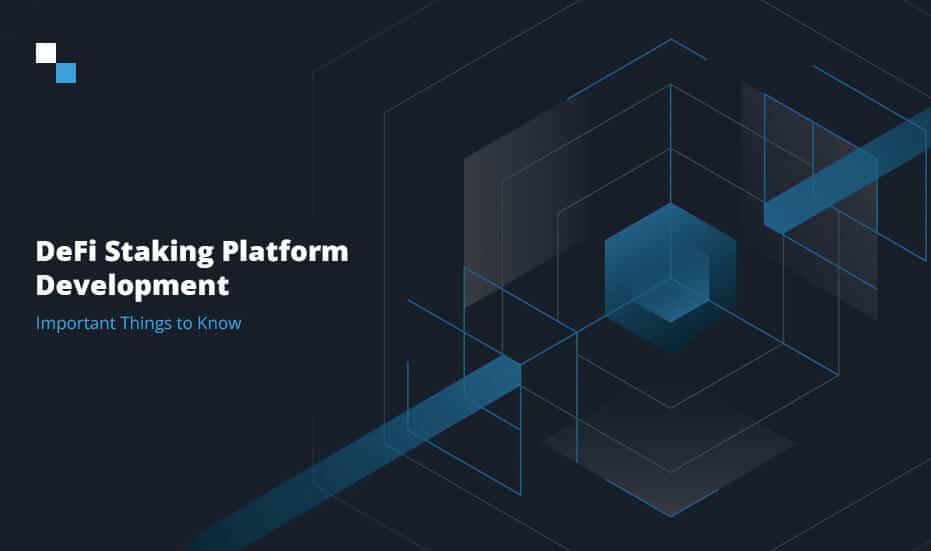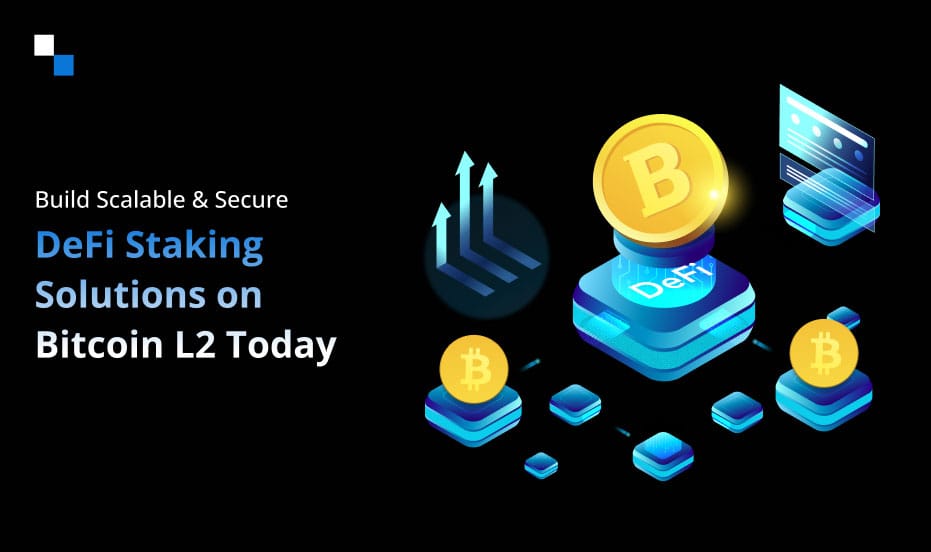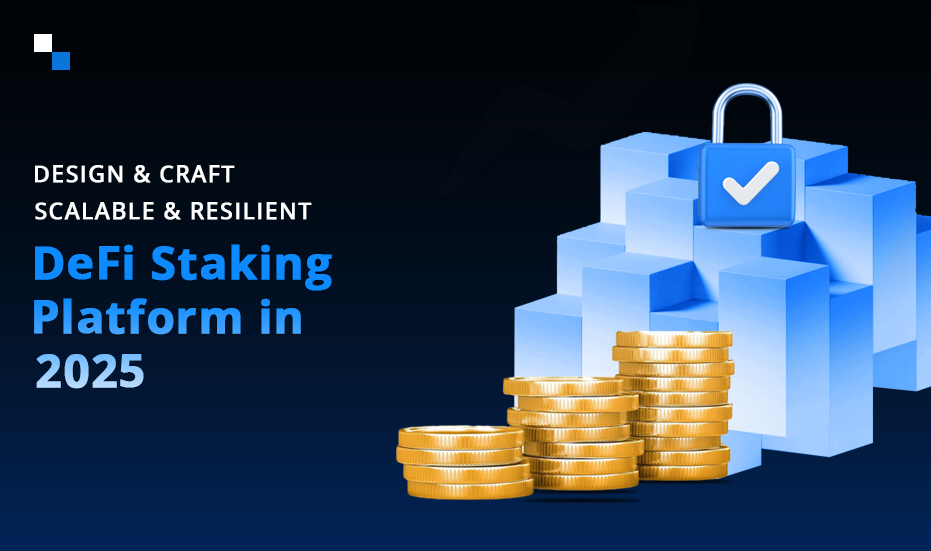DeFi staking is a technique that allows a user of a Decentralized Finance (DeFi) Platform to earn money by acting as a transaction validator. DeFi staking has instantly become one of the DeFi Market’s most popular themes, enabling cryptocurrency investors to earn passive income by staking their crypto transactions.
Since the number of Decentralized Finance wallets on Ethereum has surpassed 3,00,000, the staking idea has grown even more popular. Wealth development has been a major focus for many crypto service providers and protocols. staking is a profitable option for DeFi members to monetize their crypto holdings in addition to crypto trading. Furthermore, POW (proof-of-work) is not a particularly sustainable blockchain paradigm. As a result, the majority of blockchains are migrating to or embracing POS (proof-of-stake) consensus. With that, Defi staking appears to have a long and profitable future.
Let’s look at Defi staking and the Defi staking platform development in this perspective.
What is the DeFi Staking platform?
Many clientele of centralized staking platforms are curious to know more about DeFi staking platforms and how the underlying module operates. DeFi staking is a new approach to profit from your crypto holdings by utilizing the benefits provided by the decentralized finance network. The notion of staking in a centralized and decentralized approach might differ. Staking was formerly thought to be a procedure of authorizing transactions and adding a new block to the blockchain while being rewarded for doing so. In contrast, DeFi staking may be defined as the practice of locking crypto assets in a smart contract in return for becoming a validator in a DeFi protocol or a layer 1 Blockchain and collecting the rewards of fulfilling the needed obligations. In a larger sense, DeFi staking refers to all DeFi actions that necessitate a user’s temporary commitment to the crypto assets in a DeFi staking platform.
What Kinds Of DeFi Staking Are Out there?
We will examine staking as well as the other two DeFi staking modes that can be leveraged while DeFi staking development.
Staking
Staking in its purest form is locking a certain number of crypto assets in order to become a validator in a Proof-of-Stake (Pos) blockchain network. Proof of work (Pow) is based on algorithms, and transaction validation needs computer labor, whereas Proof of stake (Pos) is based on validators. In other terms, the auditors must carry out their responsibilities properly or risk losing a portion or possibly the entirety of their investment. Validators can also earn staking incentives for constructing and validating blocks. Ethereum is presently the most well-known PoS blockchain; other significant instances are Polkadot and The Graph.
Yield Farming
While the emergence of yield farming demonstrated the full capability of DeFi’s, lending and borrowing platforms gave the first compelling use case of decentralized finance. The process of transferring various crypto assets over DeFi staking platforms in order to maximize profit is referred to as this phrase. People make their assets accessible on a lending protocol or liquidity pool, earning passive income in the form of interest and a share of the revenue earned by their preferred DeFi staking platform.
Liquidity Mining
Depositing crypto assets and tokens to liquidity pools is a subtype of yield farming known as liquidity mining. In a form of Decentralized Exchange (DEX) called Automated Market Maker, these pools are critical for facilitating trading without the use of middlemen. A regular liquidity pool is made up of two assets that make up a specific trading pair. As a result, the entire system is reliant on liquidity providers to make assets available in the liquidity pool.
Why are start-ups and enterprise-level businesses investing in DeFi Staking platform development?
Many Startups and enterprise-level businesses are taking a keen interest in DeFi staking platform development as it is a great way to engage users to their platforms. The more enticing benefits offered by a startup’s DeFi staking platform, the more users will be interested in contributing their assets to the platform’s liquidity pool. The amount of liquidity provided by a DeFi staking platform determines its credibility in the eyes of users. Furthermore, by giving staking chances on the platform, startups and corporations would be able to conduct more transactions, resulting in increased transaction fees. As a result, companies and businesses have begun to add yield farming and liquidity mechanisms into their DeFi staking platforms, allowing more people to participate in the liquidity pool.
Develop your own DeFi Staking Platform
Schedule Free DemoWhat key features are required in a DeFi Staking platform?
The features you choose for your DeFi staking model process are mostly determined by the staking model you choose and the services you want to deliver to your users. The list that follows will assist you in choosing the features to include while DeFi staking platform development.
User–Friendly Interface
DeFi protocols aren’t always simple to understand; furthermore, the more intricate the UI, the more people are turned off. As a result, making the UI user-friendly and appealing becomes vital. Dealing with private keys, sophisticated wallets, and the incentive withdrawal mechanism should be simple for users. From the sign-up procedure through the selection of assets for staking in liquidity pools, there should be no hassles.
List of supported assets and their protection
While DeFi platforms are not regulated, no one will provide money to users once they have been lost. As a result, while selecting a DeFi Platform for staking, security becomes a critical aspect. With the rising number of DeFi staking platforms, users are looking for an efficient one, thus reviewing and auditing a smart contract will be the best thing to do to avoid any disruptions.
Rewards calculator
Since the primary objective of liquidity investors and providers is to make a profit, they will examine how profitable a DeFi staking platform is. Some systems have set pricing, while others determine incentives based on DeFi Market circumstances. Traditionally, the following elements are considered when calculating a reward:
1. The staker’s share of the coins and the network’s share of the coins
2. The coin’s inflation rate
3. The amount of time spent staking
Considering all of the above aspects into account, you can include a reward calculator in the user interface so that stakeholders can quickly determine how much money they are entitled to.
Payouts
Payouts are yet another significant challenge that DeFi staking platform users are concerned about. Creating an appealing payment schedule and withdrawal method can provide your users with a clear image of when and how they will get their portion of the benefits. Adding transaction history also allows a user to track their own prior activities.
What are the perks of using the DeFi Staking platform for users?
The following are some significant advantages that the users can enjoy by staking tokens on a blockchain network:
- Staking tokens will assist your users in earning passive revenue from your digital assets.
- If your users stake DeFi tokens, their prospective interest rates will be substantially greater.
- DeFi coins are safeguarded by a highly secure smart contract.
In A Nutshell
Undoubtedly, investing in DeFi platforms is a new way to make passive income, and people are becoming increasingly interested in it on a daily basis. As market trends anticipate a surge in POS blockchains, Defi staking has a bright future. The creation of Defi staking platforms or the incorporation of Defi staking into existing blockchain-based platforms has the potential to attract worldwide cryptocurrency users.
If you are planning to develop DeFi staking platform, Antier Solutions can be your reliable technical partner. Antier Solutions offers customized services to build high-performance DeFi staking platforms fortified with all essential modules and institutional-grade security. In addition to development services, we also provide consulting services to guide you throughout the development process or even before beginning with the development to help you make the right decisions as you embark on the development journey.
Connect with our subject matter experts to share your needs for DeFi staking platform development.





